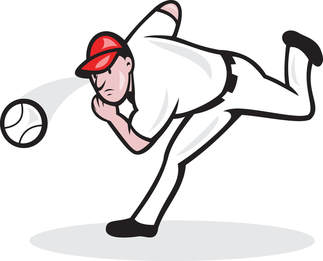|
(About an 18-minute read)
Are there benefits to 'long-form' team building activities?
If you've been around the OnTeamBuilding (ideas) and FUNdoing (activities) for a while, you know I like to take deep dives into ideas and activities. Over the last two years in particular I've been encouraging team builders to revisit the concept of 'less is more' and to consider a Stoic practice of 'do less better.' Think about these two ideas for just a moment. What do they mean to you? Less is more. Do less better.
I know, and have lived the argument, that if we do a lot of activities we have done a lot and can justify our time together with our clients - we gave them 'a lot' for their money. (Have you ever been in that position where you want to get that "one more" activity in and then you run out of time to reflect over the program in a meaningful way? So then it's, "Oh, we have time for the 'One Word' Whip." I've been there. I've done the Whip. And what did I miss? What did my clients miss?)
I'm sure you can see where I'm going with this? Before we continue the exploration, let me frame my thinking about activity 'form' (in other words, the length of time it usually takes to go through an activity). I've recently begun using the terms 'long-form,' 'short-form,' and 'mid-form' activities when talking about program design with team builders (it sounds more methodological). Long- and short-form are common terms in journalism, blogging and publishing. Mid-form I made up to designate an amount of time between long and short. In my mental model, short-form activities take 10 to 15 minutes (e.g., energizers and warm ups). Mid-form activities take 20 to 50 minutes. And long-form activities can take 60 minutes or more.
As I mentioned above, we are very familiar with short-form and mid-form activities. We like 'changing it up' to keep everyone's attention and meet different learning styles and 'kinds of smarts' - the more we change it, the more people we can connect with - so the argument goes. And it's a good argument. And it works. And what else can we do? I'm suggesting here, more long-form programming. How about an example? I invited my friend and colleague Bill (Ph.D.) into my "College is an Adventure" course when I was teaching in higher ed. (The course was for college freshman - I taught college success strategies using team building activities.) I heard about his multiple-session "Swing-To" activity and wanted to learn how to facilitate it. He joined us for three 50-minute class periods and it was well worth the time. The experience was, without a doubt, a genuine example (metaphorically speaking) of getting through college. The Swing-To is a version of 'Prouty's Landing' - a swinging rope to a platform activity. Bill used Hula-Hoops as safe landing areas and the apex of our swinging rope was about 25 feet high which gave us a lot of room to swing. The goal was the same for each of his three meetings, "Get everyone into a hoop. Each hoop needed at least one person in it." The only way to get into a hoop was to swing.
The insights these students had and the connections/transfers they made to life as a college student was exactly why Bill designed Swing To. And designing it to take a long time was on purpose. It takes a while to 'get it' - challenges in life are not always in short-form. It's good to practice for the long-form challenges every now and then.
I left out a number of the finer details of the activity, but I hope you can see my intent. Over those three classes, think about the 'obstacles' the students had to navigate. Just like college. Think about how they evolved into a group to achieve more success on one particular goal. How does this relate to college? (It's much harder to do it alone.) What are all the things they had to overcome. What was ahead of them, what did they need to overcome throughout their years in college. How long does it take to 'see' and 'feel' what's possible? Can we help our learners practice what it takes? Which leads me to my current interest in long-form team (human) building activities.
Concepts we can dive into with long-form activities:
Long-Form Activity Ideas:
I'd love to add more activities to my long-form list - what do you/would you do in long-form? Please share in the Comments.
If you made it this far, you just experienced a long-form blog post. Worth it? Waist of time? Benefits? Drawbacks? Did it make you think or roll your eyes? Both? Needed? For what? Keep doing the good work out there! All the best, Chris Cavert, Ed.D.
P.S. Would you like a super-quick update when new OnTeamBuilding content is posted? Just fill out the form below and then click the big blue button. I'll keep you posted.
2 Comments
(About a 10-minute read. This is a migration and updated post. It was first shared at the FUNdoing.com Blog. We are moving theoretical posts to OnTeamBuidling in an effort to organize content. Thanks for being here!)
Fast Ball is published in, Portable Teambuilding Activities (Cavert, 2015). (I've also posted the full description at the FUNdoing Blog site.) It's a challenging "mental model" activity where groups initially define (via Groupthink) a word (or direction) in one way and in order to be more successful they need to redefine something to break through a barrier or problem. (One of the strategies to innovate is to redefine something you believe is true in order to discover a more beneficial solution.)
After using this activity a few times, Jeremy, a fellow FUN Follower (and good friend) wrote me, asking: I have a question for you about the game Fastball. I have facilitated this activity mostly with college and adult groups and it does tend to take a while 30 min – 1 hr. for groups to complete. When the group finally gets it and is able to complete the challenge, there has been a common reaction of great let down and almost the look from participants like “You tricked us”. How have you led this activity so that it does not take so long that group members check out or become so frustrated by the end? It doesn’t bother me to frustrate a group or to raise the tension, but I’ve found it hard to bring the processing back around and be productive because the group is just done with it. Early on in my team building career, I struggled with this same issue when learning about and working with activities like Fast Ball. (Group Juggle to Warp Speed comes to mind - you create a tossing "order" standing in a circle but remaining in a circle is not a rule - forming a line in the same tossing order can lead to a faster time.) I tend to lead activities like this with adult groups (college age or older) in one of three ways: 1) When I have time (like Jeremy) I let the activity play out until the shift is made. And, as Jeremy found out, it can take up to an hour. I have experienced group reactions of success and powerful learnings, and frustration and projected blame on me, their facilitator. (Lots to talk about in both situations.) There have been times during the 'blaming' reaction where the group felt tricked and it was difficult to get them to focus back on any learnings that could be surfaced. These groups were not ready to see the learning(s) underneath the challenge. I'm sure I did my best, at the time, to move forward, but these (or any) reactions cannot be predicted. We do the best we can to program activities that will meet the objectives of our groups. (Here is another interesting topic to explore at another time: What are some strategies to bring a group "back" from a "negative" experience?)
2) Here is the way I lead Fast Ball most of the time (mostly because I don't have the time to let this play out). I frontload the activity with some information that might move the group to the shift in thinking quicker. I tell them:
"On the surface, this activity might seem relatively easy to accomplish. And it could be. You might "get it" right away. However, I've seen a lot of groups struggle with this one for one reason or another. The activity is designed to make you think. Remember, when approaching a challenge or task be mindful of the "problems" you encounter. Solve one problem at a time and keep moving. If you reach an impasse see this as an opportunity to be creative and innovative. I will hold you accountable to the rules and you are free to clarify my expectations about them at any time." After this frontload I let them play. I usually will remind them of some of the points in the frontload when they seem to be "stuck" - but for the most part, groups will make the shift and produce their fastest time within 30 minutes.
3) When I program experiences involving objectives related to mental models, paradigms, phantom rules, or simply making assumptions, I will use Fast Ball as one experience of many, to touch on the learning points. I will move into the "Educator as Teacher" role from time-to-time. I will ask more pointed questions like:
Depending on your experiential philosophy, asking these types of questions will not be your preference. As I've learned, there are a wide range of tools we can use, as educators, to reach our objectives (i.e., the objectives you have for the group or the objectives a group brings with them), other than giving a group the answers (there is less experiential learning in this method, but it could serve a purpose from time-to-time). However, I don't want to limit the tools at my disposal. Again, if I choose to point the group in a direction with Fast Ball (or another other mental model activity), it is by design. I've planned a number of these 'shifty' activities with the hope that my groups will move to different ways of defining and thinking on their own - a skill or behavior I want them to pick up and practice. A BIG thanks to Jeremy for sending me the inquiry. I hope I've provided some insight. Let me know what you thinking about these approaches. Leave a Comment below. All the best, Chris Cavert, Ed.D.
P.S. Would you like a super-quick update when new OnTeamBuilding content is posted? Just fill out the form below and then click the big blue button. I'll keep you posted.
|
OnTeamBuilding is a forum for like-minded people to share ideas and experiences related to team building. FREE Team Building
Activity Resources OTB FacilitatorDr. Chris Cavert is an educator, author and trainer. His passion is helping team builders learn and grow. Archives
January 2024
|




 RSS Feed
RSS Feed